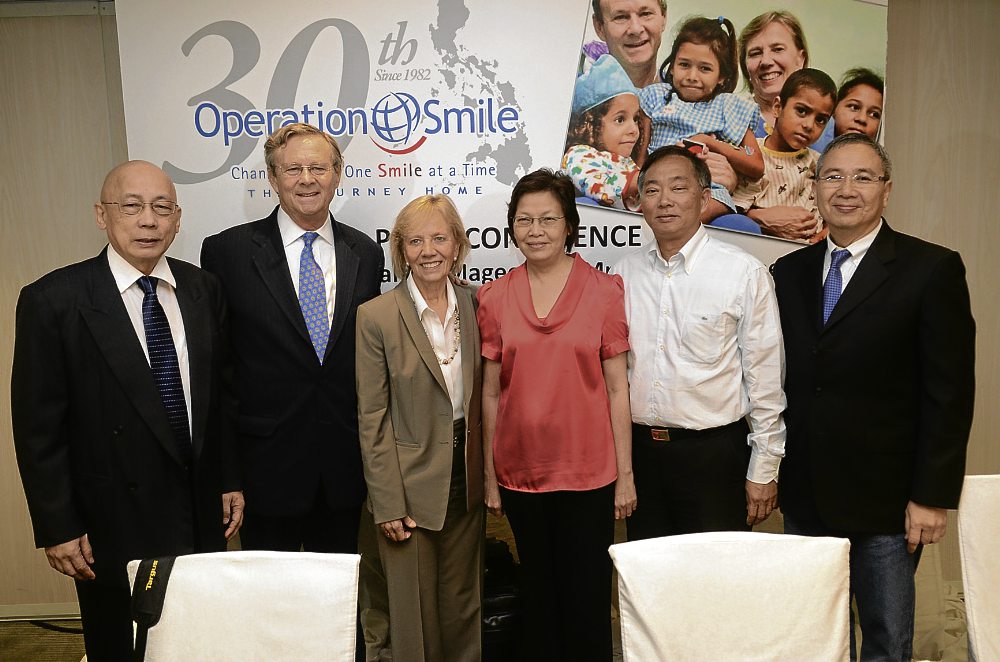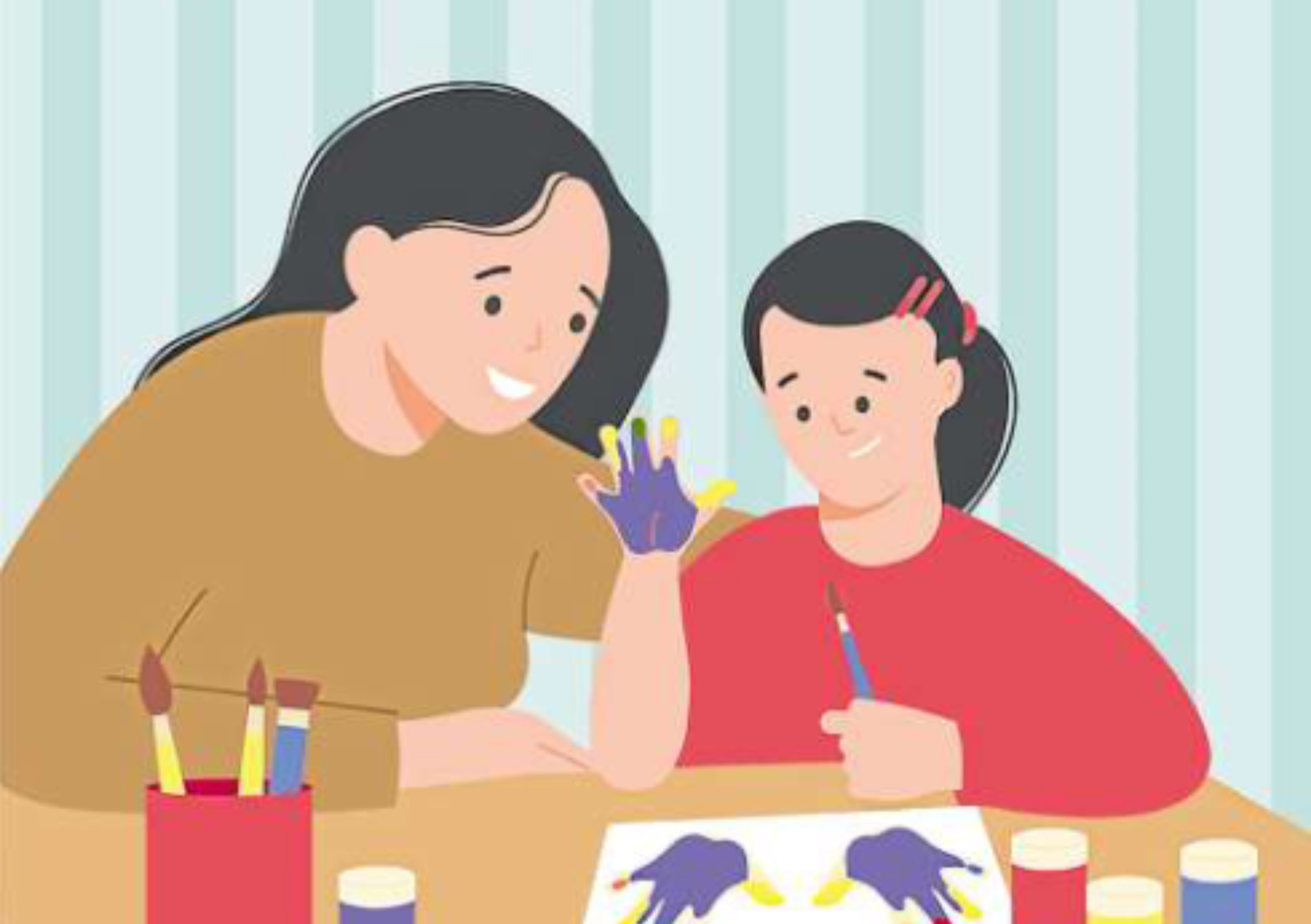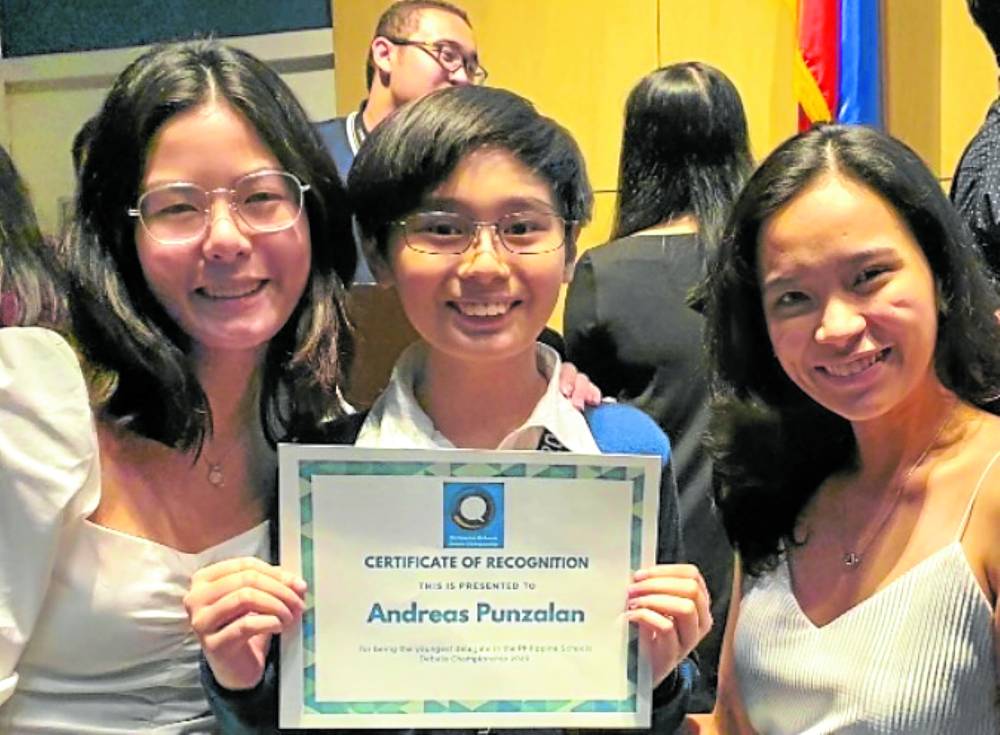 There is no one cause of cleft lip and cleft palate. It could be genetics, or the poor nutrition the mother had while conceiving, but one thing is for sure: One child is born with a cleft every three minutes, and one in 10 infants with the condition dies before he or she turns one.
There is no one cause of cleft lip and cleft palate. It could be genetics, or the poor nutrition the mother had while conceiving, but one thing is for sure: One child is born with a cleft every three minutes, and one in 10 infants with the condition dies before he or she turns one.
This is according to Dr. William P. Magee Jr., the American plastic and craniofacial surgeon who put up Operation Smile in 1981 with his wife Kathleen, a registered nurse.
Operation Smile is an international children’s charity with a network of medical professionals and volunteers that has facilitated treatment of over 200,000 patients globally. The couple was recently in the country to finalize Philippine missions for 2012.
Cleft palate, cleft lip
Dr. Magee differentiates the two birth defects: “Cleft palate is the opening in the roof of the mouth that occurs when the two sides of a palate don’t join together, while cleft lip, also called ‘harelip,’ is the opening in the upper lip that can extend to the base of the nostrils.”
A child may suffer from both, which may cause serious infection because the exposed area in the mouth is an easy venue for bacteria to get into the body. That’s why it’s necessary for an infant with a cleft to get an operation.
A child with a cleft may have ear disease, dental problems, impaired speech development, or suffer from malnutrition due to difficulty in eating, plus poor self-esteem and personal issues.
Bobby Manzano, Operation Smile Philippines president and executive director, said around 4,000 kids are born with cleft every year in the Philippines, and 24,000 children so far have been treated by Operation Smile projects.
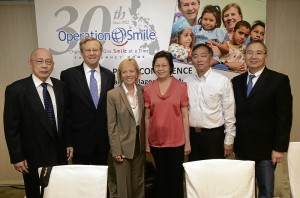 He shared, “Operation Smile started in Naga in the Philippines in 1982, and has helped less-fortunate children get free reconstructive surgeries. There are more children with cleft problems in poorer areas and local villages, which don’t even have proper hospitals.”
He shared, “Operation Smile started in Naga in the Philippines in 1982, and has helped less-fortunate children get free reconstructive surgeries. There are more children with cleft problems in poorer areas and local villages, which don’t even have proper hospitals.”
The youngest patient they had was a six-month-old baby, while the oldest was a 60-year-old grandmother. Manzano said a cleft should be urgently addressed, ideally before a child turns 12, to prevent speech problems. Funding for the missions, he added, comes from generous individuals and corporate sponsors like telecoms giant Smart Communications Inc.
OpSmile Mobile
Smart has recently come up with an app (application for mobile phone) that helps organize the registration and records of patients with cleft conditions. Ramon R. Isberto, Smart public affairs and corporate communications head, recently introduced the OpSmile Mobile, a java-based application developed by Ateneo Java Wireless Competency Center, in a launch in Makati.
He demonstrated how it works: “The app, which works with Smart phones, enables volunteers to take photos of the patient with the phone camera, key in patient information and send the data to a central web-based database that can be later accessed by specialists.”
The technology, Isberto added, speeds up the process of screening patients because, as Manzano said, “cleft conditions affect more Filipinos than we know. Many people go to the center, and it could be frustrating that not everyone can be accommodated. The app helps assess how many people can be treated, who to prioritize and how much resources and manpower is needed—even before an actual site is set up.”
Such advancements are a blessing, added Dr. Magee. Over 30 years, facilitating missions had been easier with the ease of communications and medical developments. A surgery can now be done faster with minimal downtime for patients, with medical experts and health workers working together in an effective system.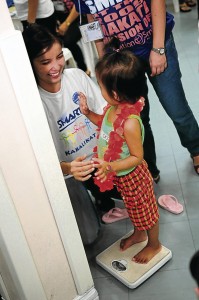
70 countries
The Magee couple has been extensively traveling in the last decade, since Operation Smile is now present in 70 countries. Success rate in terms of surgeries has been high (checkups are done after a week, a month and six months). The reconstructive surgeons and medical team regularly train, and the machine and medical supplies are frequently upgraded.
Operation Smile has been a venue for people to help and, when people donate or volunteer, they can see results.
“Big or small contributions are appreciated. We have 5,500 volunteers worldwide and people usually know of the organization from friends. People want to genuinely do good things, and we help them take the first step,” added Dr. Magee. “Children are children are children—Asian, Latino, Christian, Jew, Muslim—and they need help.”
Operation Smile Philippines is at 19/F, UCPB Bldg., Makati Ave., Makati; tel. 8119739; e-mail [email protected]; visit https://www.operationsmile.org.
This is according to Dr. William P. Magee Jr., the American plastic and craniofacial surgeon who put up Operation Smile in 1981 with his wife Kathleen, a registered nurse.

